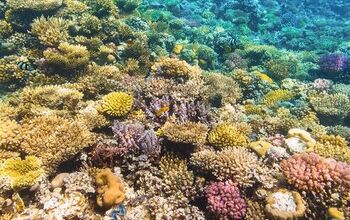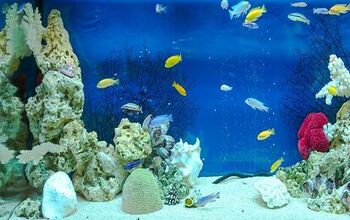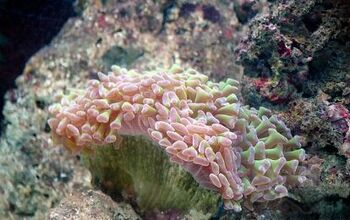Coral Reef-Safe Fish Species for Saltwater Tanks

Saltwater fish, particularly reef-dwelling species, are some of the most colorful creatures on the planet. They come in every color of the rainbow ranging from brilliant blues and greens to vibrant reds, oranges, and yellows. As beautiful as these fish are, however, not all saltwater fish are reef-compatible. Keep reading to learn more about reef-safe species of fish to use in your saltwater tank.
What Makes a Species Reef-Safe?
A reef environment is a living entity made up of live rock, corals, and marine invertebrates – it is an underwater ecosystem that needs a certain balance to survive. The truth of the matter is that some species of fish simply are not compatible with a reef environment for one reason or another. Some saltwater fish feed on marine invertebrates or smaller species of fish, for example, and others dig through the tank substrate which can disturb corals and other tank inhabitants.
Related: The True Tail Behind the Regal Tang Fish
A reef-safe species of fish is simply one that is deemed safe for use in a reef aquarium – this means that it is unlikely to eat small fish and marine invertebrates and that it will get along with other species of fish.
Top Recommended Species of Reef-Safe Fish
There are thousands of different species of saltwater fish, but many of them are not reef-safe. If you are thinking about adding fish to your reef tank, consider one of these top recommended species of reef-safe fish:
Gobies: The name goby applies to fish belonging to the family Gobiidae and there are more than 2,000 different species. Gobies usually grow to no more than 4 inches in length and they are bottom-dwellers, typically feeding on algae and small shrimp.
Related: Open Your Tank to Clams
Anthias: Many of the orange, yellow, and pink fishes that live in reef environments are anthias – fish that belong to the subfamily Anthiinae. Anthias usually remain fairly small and they feed largely on zooplankton which means that they aren’t a threat to invertebrates and other fish.
Wrasses: While some wrasses are notorious for killing invertebrate and other fish, many of the smaller species are considered reef-safe. Cleaner wrasses, for example, feed on dead tissue and parasites. Other reef-safe wrasses include the exquisite fairy wrasse, the leopard wrasse, and the Christmas wrasse.
Blennies: There are six families of blennies grouped into the Blennioidei suborder. These fish are usually fairly small with long, eel-like bodies and large eyes and mouths. Blennies burrow into sandy substrate, feeding on small crustaceans – they are not a threat to larger invertebrates.
Tangs: These fish belong to the family Acanthuridae which they share with unicorn fishes and surgeon fishes. There are nearly 100 species in this family that have been identified and tangs are among the most colorful of these species. Some tangs can grow very large but they have small mouths that they usually use to feed on algae.
These are just a few of the many reef-safe species out there – if none of these appeals to you, do some research of your own to find some better options. Just make sure that your reef tank is fully cycled and stable before you add any fish.

Kate Barrington is the loving owner of two cats (Bagel and Munchkin) and a noisy herd of guinea pigs. Having grown up with golden retrievers, Kate has a great deal of experience with dogs but labels herself a lover of all pets. Having received a Bachelor's degree in English, Kate has combined her love for pets and her passion for writing to create her own freelance writing business, specializing in the pet niche.
More by Kate Barrington






















